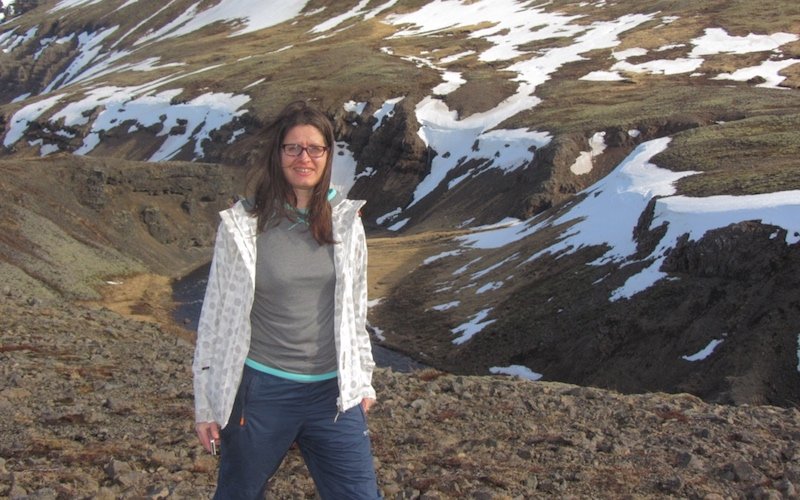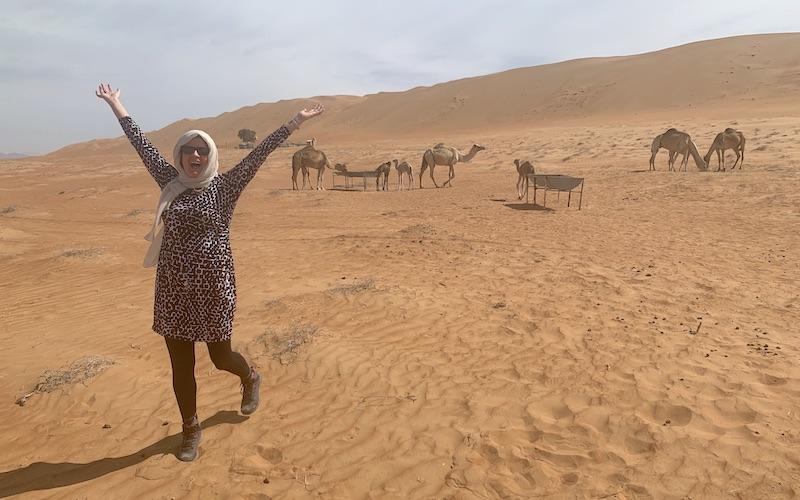Gap years have been very popular particularly for students – taking a gap year between college and university, or before they venture into the world of work. However, in the last decade, there has been a drastic increase in the number of working professionals and retired people who are taking a gap year.
[amazon table=”30285″]Taking a Gap Year – Is it really possible?
Of course, most people decide on taking a gap year between college and University or between University and starting their first job. However, many people nowadays want to take a gap year at all different life stages including:
- A career break
- An extended honeymoon
- Travel during Maternity or Adoption Leave
- Early retirement
- Remote working year
It is possible of course to do a gap year at any time in your life provided that you have done adequate planning and saved enough money. The more commitments that you have at home such as pets or children, the harder it may be, but it’s never impossible. There are ways that you can travel with your dog although you may want to avoid countries with a large stray dog problem. There are also ways that you can travel with your kid including the ‘World Schooling’ option. A lot of companies and institutions nowadays offer a sabbatical for their staff which can be used to travel.

Top Tips for Planning your Gap Year
The key is to plan ahead and once you have saved enough money just for it! You may want to fully plan your gap year itinerary, but the good news is that it’s fine for this to be pretty flexible. You can actually sort out money exchange, visas and healthcare along the way.
My best advice for anyone taking a gap year is to plan in rest days and healthcare days in between your hard core travel. Long term fast paced travel is exhausting and you don’t want to burn yourself out and then find out at the end you are frazzled with half your teeth falling out because you haven’t been to a dentist in over 12 months!!!
Taking a Gap Year How to Prepare
Ok, you have made the decision to take the plunge. The world awaits! Here are the top 10 most important things that you will need to organise to take a gap year.
1. Finances – Save Enough Money to Travel
First and foremost, to take a gap year you will need to save a decent amount of money (£10,000+ for a year long round the world trip). A good way to save is to set up a seprate savings account and transfer savings on your payday every month. If you can sacrifice eating out and coffees, and put aside a few hundred pounds a month, this will mount up quickly.
Alternatively, you could save less, and have a plan for residual income or an online business. Many people take a laptop and work remotely, making money through blogging and Matched Betting.
You can advertise your freelancing services on People Per Hour. Many people teach their way around the world. International teaching jobs can be found on www.tes.co.uk. Another option for a residual income is to rent out your property or become a landlord.
I now earn enough to travel full time. Follow this link if you would like to join my Online Money Making Facebook Group.
2. Give up your Tenancy or Rent out your House
If you are a student with your personal belonging stored safely at your parents house, then away you go! For students, taking a gap year is very easy. But if you own or rent your own home it can be more complex. However, it is still doable – don’t be put off. You can find advice on www.liverpoolinvest.co.uk.
End your tennacy agreement or start preparing to sell or let out your house. If you are renting, find out how many months notice you need to give. It is always a good idea to get out a week or two before your contract end date, so that you can pack (see below) and clean.
Selling your house to take a gap year will be more lengthy as it could be on the market for 6 months to a year depending on the area. You will also have no property to come back to if you sell, so renting out your house may be a better option.
If you rent out your house and become a landlord, find a good lettings agent to draw up contracts and manage your property while you are away. However, many letting agents don’t manage your property properly, and you may find that you can manage it yourself, even from abroad.
In order to let your house out, you will need permission from your mortgage company to do so. You can write to them and usually request permission to let your property for one or two years. For longer, you may decide to change to a Buy to Let mortgage.
Before you take a gap year, you will need to cancel your utility bills and divert your post if necessary.

3. Pack up your Belongings
Firstly, you will need to De-clutter! Cleanse and free yourself to allow the travelling lifestyle and a stress free life on your return. You can take old clothes and bric-a-brac to a charity shop and sell unwanted items on Ebay. Then, once you have decided on what must be kept, pack up and store your belongings.
I love my world map storage boxes that I found at The Works. You can also buy a variety of Storage boxes and tins on Amazon.
[amazon box =”B06Y2WK47G” button_detail=”https://www.amazon.com/dp/B06Y2WK47G?tag=templeseeker-20″ button_detail_text=”Buy on Amazon US”]If you have a large loft space, you can pack your belongings into your loft and padlock before renting out your house.
[amazon box =”B0002YP5W2″ button_detail=”https://www.amazon.com/dp/B0002YP5W2?tag=templeseeker-20″ button_detail_text=”Buy on Amazon US”]If you are in rented accommodation, or would prefer a secure storage facility, go for a storage unit such as Storage King or Big Yellow Storage. You usually pay per metre squared, so it might be more cost effective to sell furniture and buy it again on your return.
4. Prepare your Friends and Family
It is important to prepare your friends and family in advance so that they are prepared and don’t worry. Tell them that you intend to take a gap year as soon as possible to give them time to get used to the idea. You can assure them of your safety by using the Foreign Office Website to check on their recommendations for travel to certain areas. This will put your family’s mind at rest. They can be assured that you are following advice on safety of certain areas.
You can set up online accounts to make it easier to friends and family to keep in touch. Set up a Skype account for video conferencing or use Google Hangouts. You can also keep in touch easily by encouraging friends and family to follow you on social media such as Facebook and Twitter.

5. Health Preparations
Health is of paramount importance when you are travelling. If you are travelling to Africa or Asia, you may need to get vaccinated against certain diseases. For example, travelling to Rwanda, you may need Yellow Fever or Hepatitis. If you are working with animals, you might need to consider a course of Rabies injections. Some vaccinations such as Hepatitis may need a course, so seek advice a year in advance where possible.
Anti Malaria tablets may be needed, so check this with your doctor or local travel clinic and make sure that you have a supply. If you are trekking, it could be a good idea to do exercise and training to increase your fitness prior to travel. Also remember to walk in your boots.

6. Travel Insurance
Your travel insurance is vital to cover you not only for lost currency, but also unexpected medical expenses. Do not travel without it. You can search for the cheapest on www.moneysupermarket.com.
Make sure that you declare any pre-existing medical conditions otherwise you may not be covered. You will also need to specify where in the world you are travelling to, so if unsure, go for annual worldwide cover. There is proper insurance design for people taking a gap year – make sure that you specify this when you sign up.
7. Documentation – Passport and Visas
Apply for your passport at least 3 months before you travel if possible to allow for a backlog or postal strikes. You can get a passport much quicker, but the stress and cost of leaving it until the last minute is not worth it.
[amazon box =”B07CN7TFTL” button_detail=”https://www.amazon.com/dp/B07CN7TFTL?tag=templeseeker-20″ button_detail_text=”Buy on Amazon US”]When you decide to take a gap year, check whether you need any visas for the countries where you intend to travel. Take photocopies of these documents to store in a separate part of your luggage.
8. Currency Exchange
Check that you have a good supply of currency in advance (I use the Post Office). Some currencies are not stocked and need to be ordered in advance. Some countries have a closed currency, which means that you will have to take GBP (£), Euros or USD ($) and change it on arrival.
It is a good idea to take different currencies with you and split your money supply between hand luggage and main baggage. For large amounts, carry a credit or debit card. You can also order a travel currency card from the Post Office which is replaceable if it is lost or stolen.
9. Tickets and Accommodation
You are nearly ready to take a gap year! Now plan your journey and book! You can book cheap accommodation on Agoda or hotels.com and find cheap flights on Expedia. But if you are looking for a round the world ticket, I recommend a round the world ticket and a consultation at STA travel. You can also read this article by my friend Chris about RTW Tickets.
10. Taking a Gap Year – Pack and Go!
Ready to take a gap year? Just buy your Lonely Planet guides and pack and go! If you have any further advice for anyone taking a gap year, please comment below.
If you are taking a gap year, you might also like to read about:

